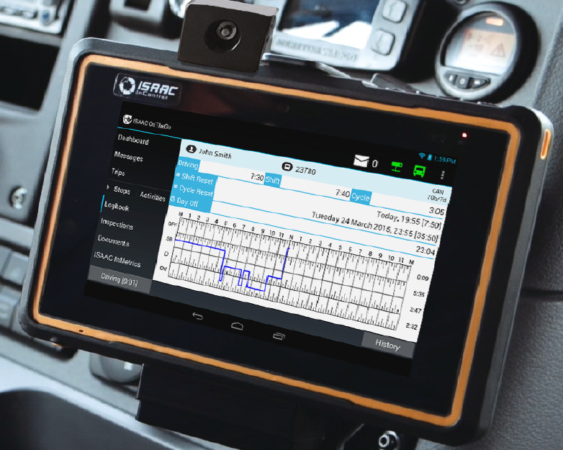Explaining the U.S. hours-of-service changes
The U.S. Federal Motor Carrier Safety Administration (FMCSA) has announced changes to the hours-of-service regulations that impact the driving time available. It has revised the rules in four areas
- The shorthaul exception;
- 30-minute break requirements
- Adverse driving conditions
- Sleeper berth times
Effective date
The changes to the regulations become effective 120 days after publication in the Federal Register. Having been published on June 1, 2020, the rule revisions are effective as of Sept. 29, 2020.
Shorthaul exception
The changes to the shorthaul exception increase the maximum permitted hours on-duty and the distance restriction. The maximum hours on-duty is changed under shorthaul exception from 12 hours to 14 hours. It also extends the maximum radius in the shorthaul exception from 100 to 150 air miles.
The extension of the maximum allowable workday for short-haul drivers from 12 to 14 hours corresponds with a 14-hour maximum of property-hauling drivers. Shorthaul drivers remain subject to existing limits of hours spent driving – 11 hours for drivers of property-carrying CMVs requiring a CDL.

The extension of the distance restriction from 100 air miles to 150 air miles is consistent with the distance limitation for shorthaul drivers that are not required to possess a commercial driver’s licence.
Drivers and carriers using the shorthaul exception are not required to use logs – paper or electronic – or take a 30-minute break. This extra time of the driving day has always been available to drivers if they opted out of the shorthaul exception. This change allows drivers to retain the status while receiving regulatory relief.
30-minute break
Under the revised rules, the 30-minute break requirement for drivers is changed from the current requirement after eight hours on-duty, to when the driver has driven for a period of eight hours without at least a 30-minute driving interruption. The break may be satisfied by any non-driving period of 30 minutes – on-duty not driving, off-duty, or sleeper time.
Under the existing regulations the break would be required to be off-duty, with no work – including paperwork or loading or unloading – being performed and was triggered after eight hours, regardless of driving time. Note: the changes to the 30-minute break provision do not increase the maximum driving time during the work shift or allow the driver to drive after the 14th hour.
Adverse driving conditions
The definition of adverse driving conditions is modified so that the exception may be applied based upon the driver’s, not just the dispatcher’s, knowledge of the conditions after being dispatched. It extends the driving window during which the current exception for extended driving time maybe used by up to two hours for truck operation.
A driver who encounters adverse driving conditions is allowed up to a 16-hour driving window for property carriers, within which to complete up to 13 hours of driving.
Additionally, clarifying changes were made, including adding the word “immediately” to clarify the time when the applicable conditions must be known. Another change was the reference to “unusual road and traffic conditions” was modified to read “unusual road or traffic conditions,” clarifying that either scenario would qualify.
Sleeper berth
The sleeper berth requirements allow drivers to take the required 10-hour off-duty time in two periods, provided one is, whether in or out of the sleeper berth, at least two hours long and the other is of at least seven consecutive hours spent in the sleeper berth.
The revision also provides that neither period, when paired together, counts against the 14-hour driving window.
In all, the revisions increase the flexibility of the hours-of-service regulations.
Have your say
This is a moderated forum. Comments will no longer be published unless they are accompanied by a first and last name and a verifiable email address. (Today's Trucking will not publish or share the email address.) Profane language and content deemed to be libelous, racist, or threatening in nature will not be published under any circumstances.